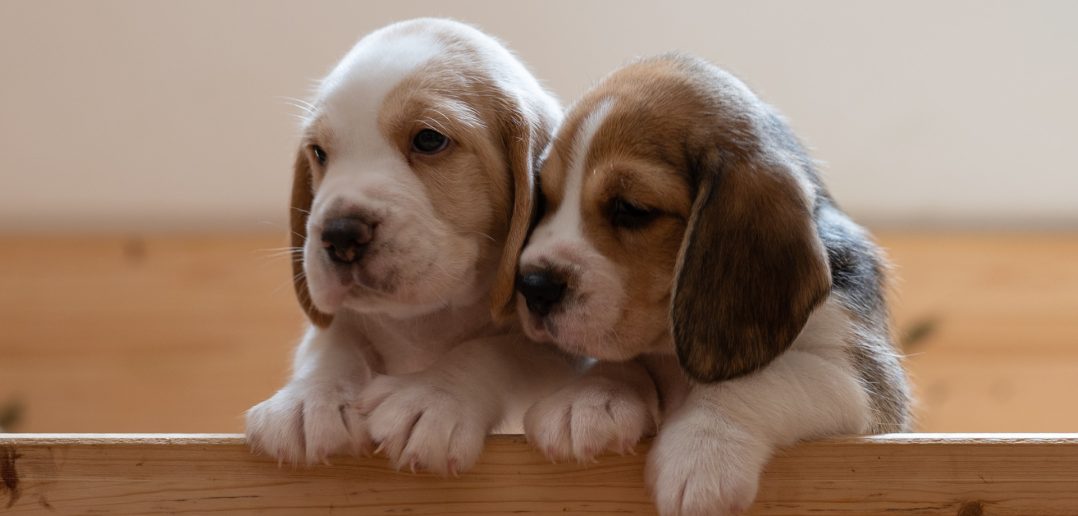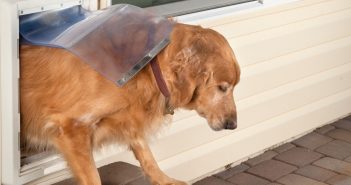Getting a new puppy is perhaps one of the greatest joys in life. Whether you’re young or old puppies bring laughter and warm fuzzy feelings all around. In fact, puppies are so much fun that many new owners unintentionally neglect their role in preparing the puppy for training success!
We’ve all seen the obedient dogs everyone dreams of owning. You know the ones who walk next to their master paying no attention to others on their walk without a leash to hold them. How about the dogs playing fetch at the park and bringing their toys back every time regardless of other dogs or kids running around?
Then we’ve seen the not so obedient dogs. You know the type who bark at everyone, pull their owners on walks and think everything is a game of “catch me if you can!” These are the untrained dogs commanding their masters’ day in and day out. After seeing a couple of those you made the commitment to guarantee your new puppy never behaves like that.
To help you meet that commitment, consider utilizing these five steps for preparing your new puppy for training success:
- Make a solid plan BEFORE you bring your puppy home
- Establish where your puppy will spend his time
- Make a list of boundaries everyone agrees on
- Take every opportunity to build your puppies confidence
- Use common commands regularly
Making a solid plan is the beginning of your preparation and needs to be done before your puppy ever comes home. Why? Because what your puppy is allowed to do in the first three days they enter their new home lays a blueprint of acceptable behavior! That means if your puppy gets to run all over the place chewing shoes and having potty accidents (even though you’re busy taking things away and cleaning up behind him) he is learning this is how things are done.
In my home when a new puppy arrives they get to spend the first three days in an exercise pen with a kennel containing a warm place to sleep, puppy pads for potty and toys for chewing. That’s it! They don’t get to go anywhere else in my home except to walk outside for a potty break. This tells my new puppy that he has a place that is his and I have a place that is mine. It also tells him what’s okay to chew and what isn’t without the stress of ruined shoes and missing socks!
This brings me to the second step, decide where your puppy will stay and prepare it before you bring him home. You don’t want to have to run out to the local pet store to purchase supplies while your puppy waits in the car or gets carried through the chaos of the shopping experience.
If you don’t want to invest in an exercise pen designate an area like a hallway or corner of the living room that will be his. You can use baby gates or supervised tethering to keep your puppy in his new area. While many people pick the bathroom for this new location I don’t think it’s your best choice. Your new puppy needs to become familiar with the family routine, smells and sounds. That’s hard for him to do closed off in a separate room. Additionally if you keep your puppy where you can see him you’ll be more equipped to catch potty accidents in the making and get him outside where you want him to go.
The exercise pen is my first choice; an over sized wire kennel would be my second choice since you can set it up in a similar fashion. If you have limited options I suggest a tethered space and a crate for when he isn’t supervised. If tethering is your option leash him to the chair you are sitting in with enough room to play but not get out of sight. NEVER leave him tethered where you can’t see him.
The third step is critical for successfully setting limits for your new puppy and should be discussed with everyone in the home. If each person has a different idea of acceptable behavior the puppy will get mixed signals from his masters and become confused and confusion makes training difficult!
It’s important to have these boundaries agreed upon before your new puppy is allowed to spend supervised time with you to ensure a successful and stress free transition. For example, if you don’t want your puppy on the furniture it’s best to make sure the kids know before they take him into the living for some fun couch time!
The fourth step will take the most time but could be one of the most crucial for training success. As your puppy explores new spaces, especially outside they will tend to show signs of fear. It’s at these times you want to be certain to NOT baby him. Simply go on with your business and let him figure things out for himself. A confident puppy trains much easier than a puppy fearful of his surroundings.
It is equally critical to make sure you take your puppy out in the world as soon and as much as possible. These continued exposures help to build confidence in any situation as well as socialize your puppy when it will have the most impact. A dog can be fully trained at home but if he has not been properly socialized that training will be ineffective when out in the world.
And finally, don’t be shy with the common commands. When you see your puppy sit say, “Good sit.” When he lies on the floor say “Good down.” When he comes to meet you gently place your hand on his chest and say “no jump” and then pet him. Praising him when he does the commands naturally will set a solid foundation for connecting the command with the action when his formal training begins.
By utilizing these five steps and making them a natural part of your puppy interactions you’ll set a solid foundation for your puppies training success. He will know what’s expected of him from the start and how to please you, something every dog longs to do.
Mikki Hogan, is an avid dog lover. Her love for dogs is evidenced in her devotion to animal rescue and the unconditional care she gives all her animals. Mikki lives in a quiet rural neighborhood of North Carolina with her family. She is instilling her passion for dogs in each of her children by teaching them to properly provide care, discipline and limitless love.





12 Comments
We had our plan all figured out, but the one thing we weren’t sure about was how Sisko, our 17 month old we already have would take to our little Juno. I came in the house first and put Sisko on his leash and then called my wife in with Juno. I stayed down the hall a bit to let Sisko settle down before she let Juno on the floor.
Well, no problem there. She completely ignored him.
The plan you give is great to have otherwise it can end up in complete chaos running around getting things organized on the fly with a puppy ruling the roost. 🙂
Getting a new puppy is perhaps one of the greatest joys in life. Whether you’re young or old puppies bring laughter and warm fuzzy feelings all around. In fact, puppies are so much fun that many new owners unintentionally neglect their role in preparing the puppy for training success!
Great tips. Now if you could just train my husband to get on the same training page with me I would be forever grateful. I’m surprised my dog Lefty is as good as he is. At least he knows he has one boss in the house. Mommy!
Great advice. I think that planning and consistency as you have described above are crucial for developing a well-behaved pup.
Approaching your puppy training in a hodge-podge manner is just asking for problems. Do your homework, plan ahead and be consistent. I wish more pet owners followed this advice.
I liked your asrticle very much. We have 4 new Schizue puppies. We love them but they were keeping us up all night. I purchased the following book and it was great. Just for you dog lovers who may need some help training your animals. It’s a little pricey, but worth it.
Click Here!
Great post. Love your post a lot. I will share this with all of my friends who love pets.
Thanks
Training dogs is very much like parenting children, especially teens. Boundaries must be established.
If properly introduced, a kennel becomes a dog “safe place” where they go for refuge.
I’ve just written a blog on the importance of establishing your dog in their own kennel, with advice on the right kennel for you. This article was a great help. Thanks!
This is such great advice. I will always keep this in mind. Well, before we brought our puppy home we also made some plans with the training. Thank goodness everything went as well as what my family planned. I will keep this in mind in case we decide to get another puppy. Thanks for the advice!
It is great to read this kind of useful article since it can definitely help me in training my puppy.
I am really impressed with your writing skills as well as with the layout on your blog. Is this a paid theme or did you modify it yourself? Anyway keep up the excellent quality writing, it’s rare to see a great blog like this one these days..
I do not even know how I ended up here, but I thought this post was great. I do not know who you are but certainly you are going to a famous blogger if you are not already 😉 Cheers!